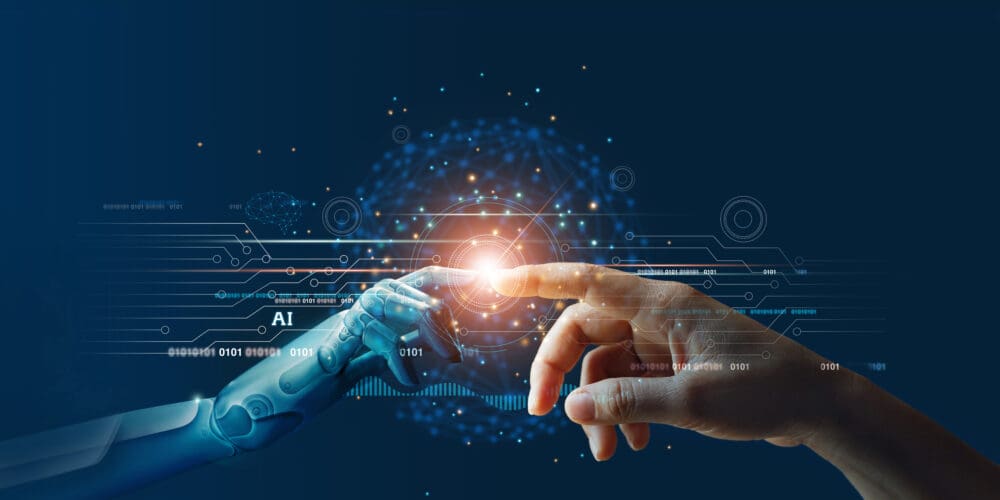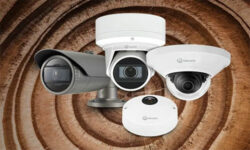Making Video Verification More Effective with Artificial Intelligence
AI ties video in with intrusion alarms to slash false alarms and save valuable law enforcement resources.

Photo via Adobe, by ipopba
The camera, as the saying goes, does not lie. The ability to see video footage of an alarm event in progress has dramatically reduced false alarms in recent years. And, when that video is supported by the capabilities of artificial intelligence (AI), it even further empowers operators and response teams to respond swiftly, and appropriately.
So while it’s true that video verification has been enabling better informed responses for several years now, the application of AI for this purpose has proven a real game-changer. Leveraging video to verify intrusion alarms has been gaining some serious momentum recently, as the technology has improved and become less expensive.
Increasingly more end users are cognizant of its capabilities and also realize that first responders have grown very weary of the wasted resources and dollars lost to false alarm dispatches. Video verified alarms simplify central station and dispatch operator processing time significantly.
They literally cut to the chase and enable an immediate dispatch complete with concrete evidence and facts of what is truly happening at a location. Informed decisions make for better decisions and the best possible security outcome. AI is certainly helping the cause.
Innovations within the Internet of Things (IoT) and AI are enabling video surveillance systems to be much more powerful and proactively predict potential security incidents. Technologies including machine learning, deep learning and artificial neural networks are allowing intelligence based on learned patterns and predictive analytics. The information it can impart to video is impressive.
Exploring Artificial Intelligence Capabilities
“The capabilities of AI in video verification are becoming increasingly powerful,” says Steve Walker, vice president of monitoring operations – U.S. for STANEY Security. “AI is allowing video to look beyond the presence of humans to identify actual circumstances where human activity is prohibited. For instance, AI can be used to partition a particular space within a secured area to watch for the presence of two individuals rather than just one and raise an alert only in that circumstance. Using AI to recognize certain situations known to increase the probability of a crime brings tremendous value to the monitoring company, and for the customer improves security while optimizing labor costs associated with monitoring.”
“AI’s ability to accurately identify humans and vehicles reduces false alarms by 90% or more,” says Brian Baker, chief revenue officer, Calipsa.
This reduction, he says, allows central station operators to focus on real events and enables law enforcement to respond less to non-threatening activities.
“AI-based software performs an initial review to eliminate virtually all alarm events not containing humans or vehicles,” Baker adds. “Station operators analyze the reviewed video to ensure the alarm isn’t the result of an event such as planned maintenance at the site. Law enforcement officials have confidence in response calls when they know a human has reviewed the video and verified assistance is required. With fewer incoming nuisance calls, officers can respond more quickly to events genuinely requiring their presence.”
Along with the addition of AI, video verification technology itself has improved considerably the past couple of years.
Joey Rao-Russell, president and CEO of Kimberlite (largest independent Sonitrol franchise), points out that, “Analytics and quality continue to improve while price points reduce. With higher pixel resolutions and better learning software, we can pinpoint specific events such as loitering. We can also use facial recognition and other analytics to determine people, colors, shapes such as cars, with greater accuracy. All of this allows for decreased false alarm and greater ability to monitor efficiently.”
Video Use Gains Traction
The use of video verification has gained momentum, according to Morgan Hertel, vice president of technology and innovation for Rapid Response Monitoring.
“There is no doubt that it’s starting to accelerate, with other factors in addition to improved tech and cost pushing it along,” he says. “Video has become more mainstream and the idea of using it to enhance security is more acceptable than five years ago. You can also factor in the costs of false alarms or the increase of areas requiring verified response.”
Other improvements he cites include increased Internet speeds and availability; better video compression CODECs; better analytics at the edge as well as in the Cloud; better integrations with consumer applications and platforms; and cameras today are more affordable and have smaller footprints.
Video verification technologies are improving in terms of image quality, but more importantly, in the realm of applied analytics. This helps operators identify potential threats within video images/streams, says Mark McCall, director, global monitoring, STANLEY Security. Analytics, he says, are becoming increasingly effective in identifying human beings even in low light conditions.
“Analytics also allows video monitoring to scale more cost-effectively in the monitoring center,” McCall says. “Without the reduction in nuisance alarms, staffing for video monitoring becomes much more costly.”
AI vs. Analytics Technology: What’s the Difference?
Hertel explains that there is a big difference between AI and video analytics.
“Today, most of the video applications are really an analytic that is purpose-built to detect something,” he says. “Examples are people vs. weather, tripwires, people counting, face mask adherence, etc. Some of these can be very specific and complicated in nature but are still just designed to track one thing.”
AI, on the other hand, is when you take an analytic like human detection, then start to add in other data elements for the purpose of reaching a decision.
“A simple example is a camera and AI see something every day such as a person putting trash in a dumpster,” Hertel points out. “The AI looks at the times, the person’s physical makeup, and the type of trash cans and then that becomes a ‘normal event.’ However, when either someone else takes out the trash or the trash is being dumped outside the normal timeframes, the AI determines on its own that this is abnormal behavior and alerts someone.”
AI augments the operator for much faster processing times, Rao-Russell, treasurer and immediate past-president of the Partnership for Priority Video Verified Response (PPVAR), adds. For instance, they can set the analytics to notice a car in a loading zone for a specified time during off hours.
“Previously, we would have only received a motion that required an operator to watch what was happening,” says Rao-Russell. “We are also using deep learning to filter known false alarms, to allow us to only see what is happening. This also allows the end user to be involved in the process to ensure the fastest response.”
Adoption on the Rise
From Walker’s perspective, demand for video verification services remains highest in areas where traditional security solutions struggle — namely outdoor applications. Video verification enables broad coverage in complex outdoor target-rich environments such as equipment storage, vehicle storage and outdoor retail environments where the use of traditional security devices is difficult or impossible to effectively deploy.
Outdoor environments are notorious for false alarms caused by unexpected yet normal activity from humans, animals, moving shadows, flashes of light and weather events.
“Video verification allows for a quick assessment of alarms and is effective at eliminating false requests for police response,” he states. “In addition to the natural events, a poorly designed system will add to the high volumes of alarms.”
As Hertel points out, “Typically, you need to add cameras to adequately cover the facility. These cameras need to be able to integrate with either the intrusion system or a platform that allows you to be to capture pre-alarm activity through the alarm condition. Most systems are upgradeable to video.”
Analytics and AI have the ability to reduce costs for customers even in environments that otherwise generate high levels of false alarms, Walker believes. In addition to traditional video verification solutions, he reports that AI and machine learning are finding use cases for non-video verification, as well.
These would be applications that help customers better understand efficiencies of employees (movement over time) as well as patterns for customers, including where they go during business hours, where they linger/dwell, going where they are not supposed to and the corresponding time of day for each.
This article originally appeared in CS sister publication Security Sales & Integration and has been edited. Erin Harrington has 20+ years of editorial, marketing and PR experience within the security industry. Contact her at erinharrington1115@gmail.com.
Need more information on central stations? Check out SSI’s Central Station Monitoring: A Complete Guide.
If you appreciated this article and want to receive more valuable industry content like this, click here to sign up for our FREE digital newsletters!
 Leading in Turbulent Times: Effective Campus Public Safety Leadership for the 21st Century
Leading in Turbulent Times: Effective Campus Public Safety Leadership for the 21st Century
This new webcast will discuss how campus public safety leaders can effectively incorporate Clery Act, Title IX, customer service, “helicopter” parents, emergency notification, town-gown relationships, brand management, Greek Life, student recruitment, faculty, and more into their roles and develop the necessary skills to successfully lead their departments. Register today to attend this free webcast!








Very interesting article on how to make the most of resources by using AI to enhance your surveillance. The implications for the effectiveness and safety are huge.